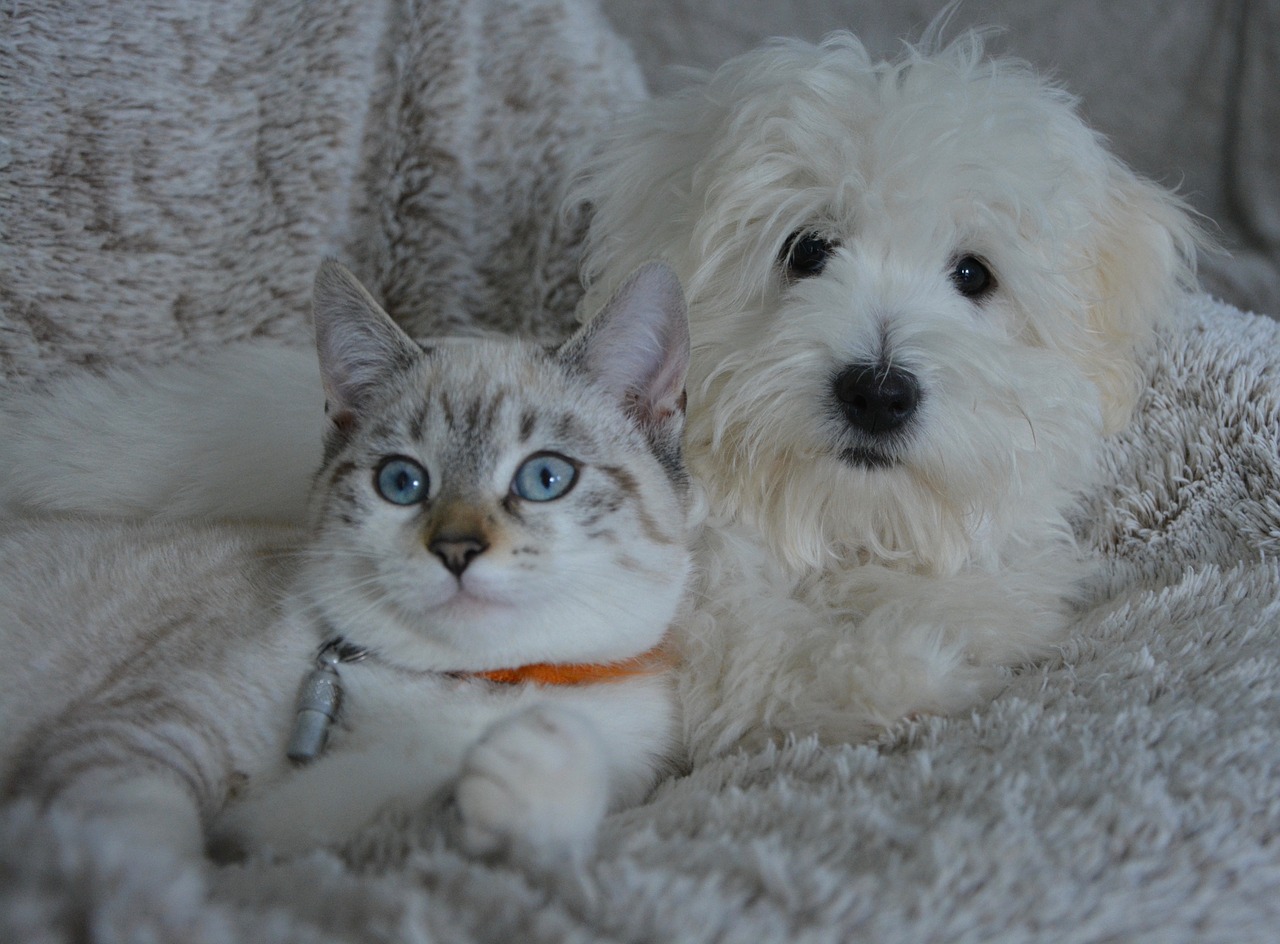
the scientific study of pet nutrition by veterinary nutrition specialists and experts.
Breed Specific vs All Breed Diets

Different breeds of dogs and cats are susceptible to different health conditions. Dalmatians frequently get urinary stones, miniature schnauzers are prone to high cholesterol and overall blood fat levels, Labradors become overweight easily, and long-haired cats like Himalayans may get more hairballs. Some of these health issues can potentially be prevented or can be treated in part by diet, so it makes sense that feeding diets designed specifically for these breeds could have health benefits.
However, the reality is that the health issues are more important than the breed – for example, a Yorkie with high blood fat levels would be treated similarly to the schnauzer with high blood fat levels, and overweight dogs of all breeds need lower calorie diets. Diet decisions should be based on the individual pet’s health concerns and other needs, regardless of breed. While there are breed-specific diets available, they may not necessarily be designed with specific nutrient levels to prevent common breed-associated health issue, even if the nutrients associated with that health issue are well-defined. The only way to know if the nutrient levels are appropriate for a specific health issue is to compare the nutrients of interest in the diet to your veterinarian’s goals for your pet. Keep in mind that regular pet foods aren’t legally allowed to be marketed as intended to prevent, cure, or treat disease – to make these claims they would have to be restricted to use only under the direction of a veterinarian as therapeutic diets.
So, are breed-specific diets just marketing then? Not completely. While the overall nutrient profiles and ingredients may be similar to diets recommended for all breeds or other breeds (because at this point, we don’t have good evidence that all members of a specific breed require different levels of overall nutrients than other dogs or cats), there may be differences in specific nutrients (within the allowable maintenance range), the calorie content, fiber types and amounts, and in the shape of the kibble that could be beneficial for some individuals of that breed (or even a dog or cat of a different breed with similar needs). The key is individualizing the diet for your pet.
Breed-specific diets for dogs like Labradors are often lower in calories, and one brand features large, donut-shaped kibble which are designed to slow down the eating speed of this notoriously hungry breed. These characteristics might make these diets good options for other lower energy, fast-eating breeds as well. Diets designed for long-haired cat breeds may have increased fiber to help reduce hairballs, while diets designed for flat-faced breeds such as bulldogs or Persians may have kibble shapes that make it easier for their short jaws to pick up and chew.
While these formulas may have some minor benefits for the intended breed, you aren’t hurting your pet by feeding an “all breeds” food, nor will you likely cause issues by feeding your Siamese and your domestic shorthair cats both Siamese food – all of the breed-specific diets are designed to meet the same minimal nutritional standards, although how the manufacturer interprets and follows those standards can definitely affect the overall quality. So, how usable the nutrients are to your pet is going to reflect the company that makes the food more so than the breed-designation on the label.
A marketing ploy to avoid is breed-specific diets that utilize ingredients that are supposedly from the same part of the country or the world as where the breed originally developed. Just because your Irish Setter came from Ireland doesn’t mean he should be fed potatoes and lamb because those are common foods in Ireland!
One thing that is worth looking for on a dog food label if you have a puppy is “large breed” versus “small breed” or diets that don’t clearly specify. The Association of American Feed Control Officials (AAFCO) has specific guidelines for the amount of calcium and phosphorus that can be in diets intended for large breed puppies versus those for smaller puppies as excessive amounts of these nutrients has been linked to health issues in large breed but not small breed pups. The front of the label, as well as the nutrition adequacy statement, should specify whether the diet is intended for large breed puppies. Once your puppy is an adult, as long as she isn’t pregnant or lactating, whether you feed a “small breed” or “large breed” diet is less important, so long as your dog is maintaining an ideal weight and is otherwise doing well.
The bottom line is that high-quality breed-specific diets could provide some benefits, but they aren’t a replacement for therapeutic diets for many common breed-related and diet-responsive health conditions. If your pet develops a health problem that might respond to diet, make sure you discuss the dietary options with your pet’s veterinarian and/or seek a consultation with a board certified veterinary nutritionist® to ensure that you are feeding your pet an optimal diet.
Want to read more information on feeding your pet?
Subscribe to always know when we add new material!
Recommended Posts

Can Diet Help With My Dog’s Seizures?
January 18, 2024

The Most Popular Holiday Foods…That Your Pet Should Avoid!
December 08, 2023

Veterinarian Recommended Pet Foods: What You Need to Know
November 05, 2023

